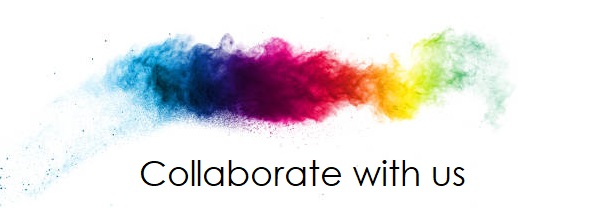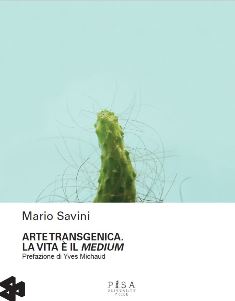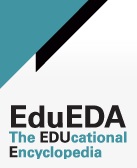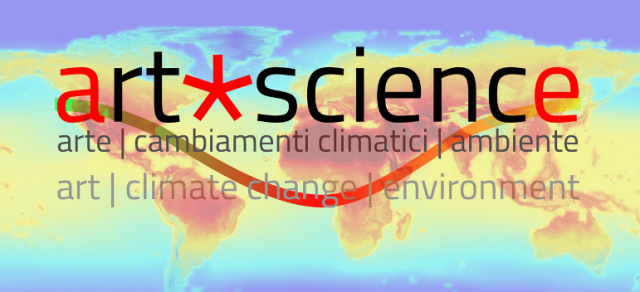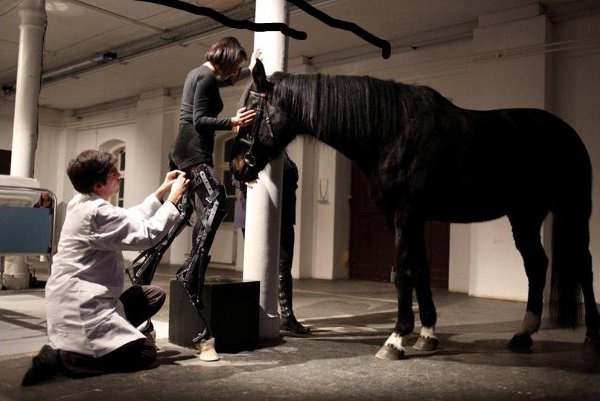
(POSTINTERFACE) 3,611 projects from 74 countries were submitted for prize consideration to the 2011 Prix Ars Electronica. The Digital Musics & Sound Art category tallied the most entries (717), followed by Computer Animation / Film / VFX (684), u19 Create Your World (637), „Interactive Art“ (566), „Hybrid Art“ (471), „Digital Communities“ (407) and „[the next idea] voestalpine Art and Technology Grant“ (129).The 35 jurors took three days to evaluate all submissions and to select this year’s prizewinners.
The 2011 Golden Nicas honor entries from Italy, Norway, France, Chile, Austria and a duo from New Zealand and Russia. A project from The Netherlands is this year’s recipient of [the next idea] voestalpine Art and Technology Grant. Awards of Distinction go to works from Great Britain, Germany, Spain, Ireland, Greece, Belgium, Italy, Japan and Austria.
2011 Golden Nicas
Computer Animation / Film / VFX
Metachaos / Alessandro Bavari (IT) / Alessandro Bavari Studio
Alessandro Bavari’s “Metachaos” is an impressive display of the amazing graphics that can be produced with leading-edge hardware and software. The 8-minute clip begins with a sequence of clear, geometric forms that suggest a serene world. But it doesn’t take long until it’s apparent that this was just the calm before the storm. Shadowy creatures and shockingly grotesque figures intrude into this domain rendered in black & white and sepia tones and rip it to pieces. Using the interplay of light and shadow, intentionally shaky camera movements and quick cuts, Bavari takes us on a tour de force through an unsettling imaginary cosmos that grips viewers and doesn’t let them loose. In addition to its extraordinary visuals, “Metachaos” features an impressive composed soundscape of incredibly concentrated intensity—noise elements paired with driving beats, panic-stricken screams, the rattling of bones and gale-force winds.
Digital Musics & Sound Art
Energy Field / Jana Winderen (NO)
Norwegian artist Jana Winderen investigates the oceans’ depths with the help of the latest technologies and treats listeners to the complexity and strangeness of these invisible watery worlds. The recordings for her “Energy Field” album were made during excursions around the Barents Sea between Greenland and Norway—in glacier crevasses, fjords and on open water. The vast expanses of Greenland, winds from the north, and ravens amidst a frozen landscape make up the setting of her haunting, highly dynamic pieces. The mix includes the sounds of crustaceans and fish—recorded while they’re hunting, for instance, or getting oriented in their physical surroundings. The result is a powerful, hypnotic journey into the unknown audio world of the icy north.
Hybrid Art
May the Horse Live in me, 2011 / Art Orienté Objet (Laval-Jeantet & Benoît Mangin) (FR)
The performance “May the Horse Live in me” is a bio-art project and an example of estreme body art. Via blood plasma injection, an animal organism (a horse in this case) is crossed with a human organism. The idea behind it is to conduct serious therapeutic research into making equine blood compatible for human beings. To achieve this, Marion Laval-Jeantet tried various antibodies from horses’ tissue. This staged blood-sisterhood raises the question ofthe boundaries separating different species, and human beings’ purported superiority to animals. A behavioral researcher, a horse and the two protagonists of Art Orienté Objet took part in the one-hour performance in Ljubliana, Slovenia on February 22, 2011. Prior to the show, a lead-in time of 10 days was necessary for Marion Laval-Jeantet and the horse to get accustomed to one another. This performance constitutes a high point in the oeuvre of Art Orienté Objet, and spans a bridge between behavioral and biological research.
Interactive Art
Newstweek / Julian Oliver (NZ), Danja Vasiliev (RU)
“Newstweek” is a device to manipulate news. The small, unobtrusive apparatus plugs into a wall socket and appears to be part of the on-site infrastructure. It enables Newstweek agents stationed off site to manipulate news items that are being read at the time on nearby laptops, cell phones and tablets. While political and business interests endeavor to spindoctor public opinion to their advantage, Newstweek, in turn, offers citizens the opportunità to manipulate the news themselves and thus to influence the reality prevailing in the public sphere. The point that Julian Oliver and Danja Vasiliev wish to make is that in times of seemingly unlimited technical possibilities, the ignorance about how this technology functions is, unfortunately, constantly on the rise as well, which means that the door is left wide open to manipulation of facts on their way from source to destination, from the server to the screen.
Digital Communities
Fundación Ciudadano Inteligente
http://www.ciudadanointeligente.org
Fundación Ciudadano Inteligente (Smart Citizen Foundation) is a Chilean non-profit organization that was set up during that country’s 2009 presidential election campaign. The group’s website made available information about the individual candidates such as their curriculum vitae, their general political philosophy and their specific platform. Fundación Ciudadano Inteligente uses diverse applications to foster transparency in politics and to support various forms of citizen involvement via the internet and other information technologies. Its mission is to reduce the information disequilibrium among citizens, political representatives and the market that currently exists in Latin America. The organization now hosts several websites that enable users to address queries to government agencies from a central location and to read subsequent responses in a databank. They have also established a blog that offers citizens the opportunity to publish information and to express their opinions on political affairs. Another website offers potential donors an overview of various NGOs including information about their organization, what they do, and their management.
[the next idea] voestalpine Art and Technology Grant
Choke Point Project / P2P Foundation (NL)
http://www.chokepointproject.net
http://blog.p2pfoundation.net
As an upshot of recent revolts in the Arab world, the Choke Point Project raises the question of who actually exercises control over the internet. The WWW is generally perceived as a decentralized medium, and many people hold the opinion that it can be used as a means of communication beyond the reach of power relationships and unimpeded by authoritarian structures. Recent events, however, reveal that this view doesn’t correspond to reality at all. Rather, individual politicians are able to cut off internet access on the part of an entire nation. The declared aim of this project initiated by the P2P Foundation is to locate nodes of the internet and to demonstrate how simple it is to prevent large segments of the populace from getting online. But this project is much more than the visualization of a “map of the Web”; it also collects strategies and opportunities to evade just such weak spots in order to free the internet from the clutches of power structures and turn over control to the individual.
u19 – freestyle computing
Weltherberge: Schulhaus / 83 participants / HBLA für Künstlerische Gestaltung Linz / HTBLA Leonding
The 2011 Golden Nica in the u19 – freestyle computing category goes to two educational institutions in Upper Austria. Several classes at Linz’s High School for Artistic Design developed the Weltherberge: Schulhaus (World Hostel: Schoolhouse) exhibition concept with technical support from students at Leonding Technical & Vocational School. The metaphor on which it’s based is the encounter with Others & Strangers. Offering hospitality and providing accommodations are the symbolic terms in which this encounter is articulated; the concrete locations at which it takes place are the door, the table and the bed. In the exhibition concept, the object that serves as the storage medium for memories is the bed, in which dream narratives as spoken texts and body silhouettes by means of multiple illuminations are recorded and cross-faded. Illustrated room dividers and rollups are transformed into projection surfaces on which lasting and transient traces of all sorts of memories and associations coalesce. Installation visitors can use the recording function to interactively supplement the media files with additional contributions of their own. The table equipe with sensor technology brings into play the traces of everyday life as well as sounds and stories.
Awards of Distinction 2011
Computer Animation / Film / VFX
The Third & The Seventh / Alex Roman / ES
“The Third & The Seventh” is an extraordinarily aesthetic animated film by Spaniard Alex Roman. One of the remarkable things about this partly surreal, partly photorealistic video is that it was completely computer-animated. Another is the tremendous expenditure of effort that Alex Roman undertook; he spent an entire year doing the graphic work—modeling, texturing and rendering—as well as the sound design that went into “The Third & The Seventh.”
THE EXTERNAL WORLD / David O’Reilly (IRE) / David O’Reilly Animation
http://www.davidoreilly.com
http://www.theexternalworld.com
David O’Reilly, an Irishman living in Berlin, is being honored with an Award of Distinction for his animated film “The External World.” His stylistic orientation is on computer games of the 1990s—flashy hues dominate the screen. There’s also a good many allusions to cartoons. Via rapid-fire editing, seemingly unrelated episodes are interlinked and dovetailed. Humorous elements tend to be of the nastily sardonic sort and sometimes cross the line into vulgarity. Bathtub suicide, hyper-pixeled sex scenes involving cartoon creatures, and the occasional act of ultra-violence take viewers to the limits of acceptability. Nevertheless, the dramatic arc of the plot—a boy learns to play the piano and finally gives a concert—leaves the viewers with a surprisingly positive feeling.
u19 – freestyle computing
Flugundfall / Nicolai Maderthoner / HTL Ortwein Graz (AT)
Styria native Nicolai Maderthoner, who recently turned 19, is being honored with an Award of Distinction for his audiovisual work entitled “Flugundfall.” The audio samples he used in it— the sound of a washing machine and a vacuum cleaner, for example—were all recorded in his parents’ home. After completing the audio track, Nicolai Maderthoner got started on the animation. The video depicts the construction of an airplane, which takes shape in miraculous fashion out of a few bars and lines. Then, following takeoff and a turbulent flight, it crashes back to earth.
MicrosizeMe / Andreas Daniliuc, Sasan Haji Hashemi, Simon Prochazka, Jürgen Spandl, Patrik Susko / HTL
Ottakring (AT)
Five Viennese high school students took it upon themselves to showcase their alma mater, Ottakring High School, in an innovative way on the institution’s own homepage. The result of their efforts is “MicrosizeMe,” a 3D jump & run game featuring lots of mini-games. “MicrosizeMe” is set up in playful fashion designed to appeal to a youthful audience; on the other hand, it effectively gets across facts about the school and evokes curiosity about and interest in technical education.
Digital Communities
Bentham Papers Transcription Initiative / Bentham Project / University College London
http://www.transcribe-bentham.da.ulcc.ac.uk/td/Transcribe_Bentham
The aim of the Bentham Papers Transcription Initiative is to transcribe the extensive handwritten manuscripts of Jeremy Bentham, considered one of 19th-century England’s most important social reformers and a thinker whose ideas influenced the development of the modern welfare state. Launched by University College London, the initiative’s website also offers students and faculty members the opportunity to encounter Bentham’s work and to improve their own skills doing research on primary sources and in the field of palaeography (the study of ancient writing). Users—regardless of their geographical location—can help out with the process of digitizing the manuscripts. Of the 60,000 documents written by Bentham now in the University College London’s library, several thousand—many of potentially immense historical and philosophical significance—have been neither digitized nor studied. Transcribing them will make Bentham’s thoughts accessible by scholars all over the world, make possible a new edition of his collected works, and help preserve these cultural treasures.
X_MSG
http://xmsg.org.uk
“X_MSG” is an experimental, SMS-based social software system created in cooperation with X:talk, a British collective of sex workers and activists. X:talk offers English courses for sex workers who recently migrated to the UK, organizes feminist and anti-racist initiatives, and advocates prostitutes’ rights. The X_MSG software lets users send text messages to the whole network by taking advantage of cell phones entitled to an unlimited number of free SMSs. Old computers and their collection of software function as the server for incoming messages and forward them to users within the network. And all that for only 5 quid a month to cover the phone and electric bills. Plus, users in the network can remain anonymous.
Digital Musics & Sound Art
Bee / Apostolos Loufopoulos (GR)
www.youtube.com/watch?v=Vv0smhGKLk4
http://soundcloud.com/apostolosloufopoulos/bee
Apostolos Loufopoulos was inspired by the insect kingdom in composing his musical work “Bee.” He describes the 13-minute long piece as “a journey on the back of a bee.” It’s characterized by an intense soundscape full of movement and speed, running the gamut from gentle, barely perceptible motion all the way to quick, violent passages that allude to the hectic activity of a hive. Some of the audio material he used was recorded in nature; some was composed by the artist and combined with natural sounds.
Suite / Philip Jeck (UK)
www.philipjeck.com
Philip Jeck is an English multimedia composer and choreographer who creates ambient music of astounding depth and beauty. In the 1980s, he performed as a solo artist all over Europe, the USA and Japan. In addition, he composed pieces for dance & theater groups as well as dance films. He also made a name for himself with a performance entitled “Vinyl Requiem” that featured 180 record players from the 1950s and ‘60s. The 2011 Prix Ars Electronica is singling Jeck out for recognition for his vinyl LP “Suite,” a studio adaptation of a live performance in Liverpool that is elegiac, sad and uplifting in equal measures.
Hybrid Art
Pigeon d’Or / Tuur van Balen (BE)
www.tuurvanbalen.com/projects/pigeon-dor
Many city dwellers find pigeons disgusting. They are said to carry diseases. They’re a nuisance. And then there’s their droppings… The aim of “Pigeon d’Or” is to significantly revise this perception. Belgian Tuur van Balen experimented with a special strain of bacteria that is added to the pigeons’ feed. For the birds, it’s completely harmless (the effect on their digestion is comparable to that of yoghurt on the human organism). But the result is to turn the pigeons’ excrement into something thoroughly useful: a glass cleanser that’s very well suited to cleaning cars’ windshields. But van Balen’s dealings with this issue don’t terminate at the end of the digestive tract; he also attempts to integrate these newly-beneficial creatures into everyday life. For one thing, he came up with a window-mounted coop—a fly-in, fly-out arrangement that anyone can use to house and feed pigeons. He also developed a construction that can be mounted on a car to enable pigeons to do their business right where it’ll do the most good. Needless to say, this project also raises ethical, political, practical and aesthetic issues having to do with biology and intentionally induced changes to it.
MACHT GESCHENKE: DAS KAPITAL / Christin Lahr (DE)
Every day since May 25, 2009, German Christin Lahr has wire transferred 1 cent to her country’s Ministry of Finance in order to, in her words, “administer homeopathic doses of a remedy to the incessantly growing mountain of debt.” In the Memo section of the money order, Lahr writes precisely 108 characters from “Capital: Criticism of the Political Economy” by Karl Marx. In this way, she will eventually convey the book’s entire text via online banking to the state’s central account at the Deutsche Bundesbank. A powerfully meaningful form of gift-giving, “MACHT GESCHENKE: DAS KAPITAL” levels criticism at the field of economics, the current finance system and the prevailing system values, as well as the bureaucratic mindset, and issues a call for long-term, sustainable thinking. This is a strategy that anybody can freely use, as well as a form of action, articulation and investment that takes advantage of the expressive potential of the everyday cash transfer.
Interactive Art
Face to Facebook – Hacking Monopolism Triology / Paolo Cirio, Alessandro Ludovico (IT)
“Face to Facebook,” an action carried by Paolo Cirio and Allessandro Ludivico, sent a few shockwaves through cyberspace this past year. In Part 3 of their “Hacking Monopolism” trilogy, the actionist duo dealt with social media platforms—in this case Facebook—and with the issue of virtual identities and their context. What they actually did was to steal a million Facebook profiles, feed them into facial recognition software and sort them according to various criteria, and then, with the information they thus harvested, set up an online dating website at which users could search for partners on the basis of both appearance and character traits. The aim of this action was to find out what was doable with these virtual identities—after all, the security barriers are rather minimal.
Particles / Daito MANABE, Motoi ISHIBASHI (JP) / Rhizomatiks and 4nchor5 La6
http://particles.ycam.jp/en/index.html
This is a light installation by Japanese artists Motoi Ishibashi and Daito Manabe. “Particles” is their designation for countless illuminated points gliding in all directions through a dark space and blinking at differential time intervals. Hidden behind these brilliant dots are balls with built-in LEDs that move serially along a track. The results are magnificent spatial light images in multifarious patterns.


